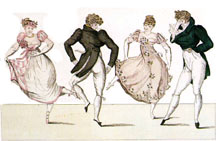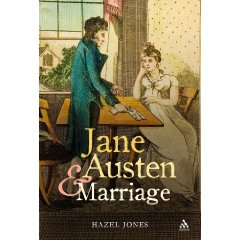A triple series of Janeite interest in the Pierport Morgan Library & Museum’s Austen Exhibit —
From Janeite Hope:
From now until March 14th the Morgan Library and Museum is exhibiting “A Woman’s Wit: Jane Austen’s Life and Legacy.” According to the website, the exhibition “explores the life, work, and legacy of Jane Austen (1775–1817), regarded as one of the greatest English novelists. Offering a close-up portrait of the iconic British author, whose popularity has surged over the last two decades with numerous motion picture and television adaptations of her work, the show provides tangible intimacy with Austen through the presentation of more than 100 works, including her manuscripts, personal letters, and related materials, many of which the Morgan has not exhibited in over a quarter century.”
There is an online exhibition that includes images of pages from the manuscript of “Lady Susan” along with a short documentary film commissioned for the exhibit. The film contains brief interviews with several writers, scholars, and actors (you’ll recognize Harriet Walker – Fanny Dashwood in the Thompson Sense and Sensibility). Though the interviews are interesting, what I like best about the documentary is watching the participants handle Austen’s letters and manuscripts. Bit of a vicarious thrill, there.
More at: www.themorgan.org/exhibitions/exhibition.asp?id=22
From Janeite Suzanne:
I’d never been to the Morgan, so I’m glad to have discovered it. There was a little film showing downstairs in the theater to introduce the JA exhibit. It had a variety of people giving their thoughts about the letters. It was ok, but seemed like rather a stretch to pad the exhibit and not particularly valuable. And it bothered me a bit to see someone actually handling the letters. They were also playing the movie, none too quietly, in the actual exhibit room which I found annoying because at that point I wanted to enjoy looking at the letters undisturbed.
They were hard to read, of course, but one could read much of it, even with cross writing and that was nice. Seeing the actual “JA” was a thrill. I was surprised that one letter had the JA squished right down to the edge of the paper and the “a” was a large lowercase a, not the one we think of as her signature and which was on everything else.
There were period copies of the books she would have read and some delightful period satirical illustrations, but what I liked best was a letter she’d written to a youthful Cassy. It would have been better if the presenters hadn’t “translated” it for us because that was the fun. I felt that I gained some insight into J’s character from seeing how she wrote this to a child and also that she was able to form the words as smoothly as if they had been familiar letters sequences. I shall have to make up my own text, but it will give you the idea of her “code”.
Read Yssac,
Ew Era ta emoh yadot dna ti si gniniar. Spahrep ew lliw eb elba ot og rof a egairrac edir siht noonretfa. I ylniatrec epoh os esuaceb ereht era ynam sgniht ew dluohs tisiv erofeb ew evael Thab.
Rouy gnivol tnua, Enaj
Now, wasn’t that fun! It’s much harder than simply writing backwards, especially the capitalization. Now I have to wonder if she thought it up herself.
from Janeite Bonnie:
JUST WANTED TO LET YOU KNOW:
Last night, I went to the Morgan Library and Museum’s exhibition “A Woman’s Wit: Jane Austen’s Life and Legacy”, and, oh, what I saw!! I didn’t know that the Morgan holds the world’s largest collection of Austen’s letters, 51 of the 160 known ones. The curators trotted out many of the more well-known letters, and it was thrilling to see them in the original hand. Among the Austenalia I got to examine:
–cross-hatched letters and letters with lines excised by Cassandra
–the backwards letter to her niece Cassy
–the letter in which she writes of the gentleman on which she “once doated”
–the letter in which she writes of having a shaking hand from having drunk so much wine, and mentions the woman with the diamond bandeau, pink husband, and fat neck, and James Digweed having made a gallant remark about the two elms falling down in grief over the absence of Cassandra (a particularly enjoyable letter, and dated November 20–serendipitously read by me 209 years to the day later)
–the letter in which she drew the pattern of the lace for her new cloak
–the letter in which she asks Cassandra to tell Fanny that she has found a portrait that looks “excessively like” how she pictures Mrs. Bingley
–the page on which she sums up her expenditures for a year
–her satirical “Plan of a Novel” (very difficult to read)
–Cassandra’s letter to Fanny describing Austen’s last days and her death
–some pages of the manuscript of “The Watsons” with much editing
–some pages of the manuscript of “Lady Susan” (of which the Morgan holds the entire manuscript)
–James Stanier Clarke’s letter to Austen, in which he tells her that it is not *incumbent* on her to dedicate her next novel to His Royal Highness the Prince of Wales, but…
–first editions of all six novels, including the spines of a three-volume set of “Emma” with the price on the original labels
–one of the books that Austen owned, “The Spectator”, with her signature and “Steventon” inscribed inside
There was other material on display related to Jane Austen, such as books by Richardson and Cowper, a copy of “Camilla” open to the page of subscribers where “Miss J. Austen, Steventon” is listed (believed to be the only time her name was in print before her death), Walter Scott’s original journal open to the page of his comment about Austen’s “exquisite touch” versus his “Big Bow-wow strain”, material by Yeats, Nabokov, and Kipling, an edition of Pride and Prejudice with a preface by George Saintsbury (he who coined the term “Janite”, now “Janeite”), and, to top it off, original prints by James Gillray interspersed among Austen’s letters to punctuate some of the trenchant comments she made in them.
As a little bonus, on the way out I stopped by Mr. Morgan’s library and took a peep at the original 1843 manuscript of “A Christmas Carol” and one of the three Gutenberg Bibles (1455) in the Morgan collection.
All I can say is, I’m so thankful for the Morgans’ use of their money in this manner.
in a second email, the following wonderful & exciting tidbit was added:
I have one more thing to tell. It happened during the question-taking portion of the gallery talk. One of the enthusiasts in the crowd questioned Declan Kiely, the curator of the exhibition, about the attribution of one of the documents — a scrap attributed to Jane Austen, with the titles of all her novels. The woman questioned whether it was actually Jane Austen who had written it, as the title “Persuasion” was listed, and she thought that that was the title Henry had given it after Jane’s death, and that she had always called it “The Elliots”. I had read that too, but I wasn’t sure that it had not been settled on before her death, as there are other theories out there.
Afterwards, a few of us compared it with the note that she wrote summing up some profits from her books, which was in the same frame, and we saw that the capital P’s didn’t match. However, now that I see the “Profits” scrap close up on the Morgan website, I do see two different ways that Austen wrote capital P on the same scrap
(See the P in “Mansfield Park”, then compare it to the P in “Profits from Emma” quite near the blot of ink.)
If it is the case that Jane Austen habitually wrote her capital P two ways, then the scrap with all the titles of her novels that is attributed to her would confirm that she intended the title of her last novel to be “Persuasion”, and all the speculation should be laid to rest.
I think it will require another trip to take a closer look and see if there are similarities of script in Cassandra’s letter to Fanny, and look for capital P’s in all of Jane Austen’s other letters…
I don’t know if people are aware of this, but the Morgan has no entrance fee from 7:00 PM and 9:00 PM on Fridays.











